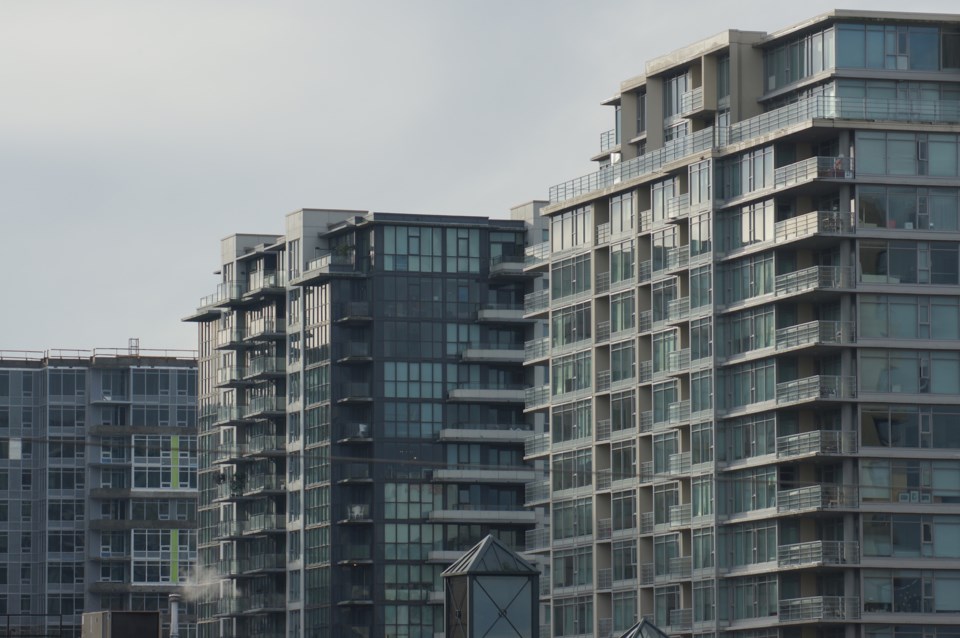The Richmond School Board is exploring the idea of sending elementary students to school in a high-rise building.
The idea comes as student enrollment continues to decline in outlying neighbourhoods of the city, while increasing in the downtown core.
“As property values go up and parcels of land become unavailable, the board has to think creatively about it, and for City Centre (neighbourhood), there is a lack of space,” said recently appointed board chair Debbie Tablotney.
The Richmond School District is looking to acquire land north of Westminster Highway and west of Garden City Road, said Tablotney.
“We’re working against time to find properties because they’re disappearing. We’re under a time crunch,” added Tablotney.
Although the City of Richmond has encouraged densification of the downtown core, which in turn creates a need for schools in that area, it hasn’t secured enough funds from developers, who pay into a facilities fee, to help the district purchase land to build a school.
As such, Tablotney said the board is looking at how it can get optimal school space in a small parcel of land that uses other resources, particularly those of the city.
For example, in Vancouver’s Yaletown neighbourhood, Elsie Roy elementary school is situated in a mixed-use building, adjacent to the 10-acre David Lam Park and a community centre.
The city is seeking to build a 28-acre waterfront park, between the Dinsmore Bridge and Aberdeen Station. Whether building a school next to that future park is a possibility, Tablotney wouldn’t say.
According to the city’s Official Community Plan, part of Lansdowne Centre’s parking lot is slated to become green space, while the rest of the property is designated for high-density, mixed-use development. However, there is no timeline for such a development.
It’s also unclear at this point whether either park could accommodate field play.
High-rise schools are common in some major North American cities, such as New York, but they’re even more common in Asian countries. A typical high-rise school may have an indoor gymnasium and a rooftop playground and/or games area.
Tablotney said it is best for children to have outdoor amenities.
“The ideal situation would be to have traditional space for a playground,” she said.
According to the city, one of its stated goals for the City Centre area is to have family-oriented housing near schools.
Last year, Richmond city council approved the densification of a West Cambie neighbourhood, without properly consulting the school district, according to a district memo from Clive Mason, director of facility planning.
Nevertheless, Tablotney maintains the district and the city are working together.
“Our outlying areas of Richmond are declining in enrollment, and the affordable housing is in the City Centre. So, we’ve known this was coming,” said Tablotney.
The city’s planned growth appears to be ahead of schedule. In 2008, the city stated Phase 1 of the City Centre area plan would accommodate a total of 61,000 people by 2021, as the city’s population reached 212,000.
The city’s population in 2014 was 207,000 and it’s expected to exceed 212,000 residents this year (and 2015 was a record year for building permits, with $1 billion in construction value approved by council).
Tablotney was unwilling to state whether selling school land will be necessary to fund a new City Centre school.
The district presently has at least $42 million, plus interest, in savings from the sale of Steveston High.
The district also has funds from new development charges (School Site Acquisition Charges). But those charges (set in 2011) appear to have not kept pace with rising land values.
The city collects a certain amount of money for every new residential unit it creates (from $463 to $772 depending on density).
The district may then apply that money for up to 35 per cent of a new land purchase. Mason said the $6.2 million it has from those charges would not come close to reaching that threshold for a school in City Centre.
Meanwhile, Tablotney noted many of the schools on the perimeter of the downtown core (Anderson elementary and Cook elementary, for instance) are at or over capacity.
Talmey elementary is more than 50 per cent under capacity, however population projections show it will be over capacity by 2022. Tomsett elementary is also currently under capacity but will be over capacity in two years with projections showing a need to nearly triple its capacity by 2028.
The board is also having to decide what schools to close by September 2017. It may close up to five.
Grauer elementary, which only has 161 students, is more than 50 per cent under capacity and shows a projected decline in enrollment to 2020. Kidd elementary and Blundell elementary are in a similar demographic situation. Sea Island elementary has capacity for 195 students but only serves 34.
Meanwhile, Thompson elementary is at 70 per cent capacity but shows an 18 per cent decline by 2022. In its decision on what schools must close, the board must weigh school capacity with other issues such as seismic upgrades, location and operating costs.
Related articles:



